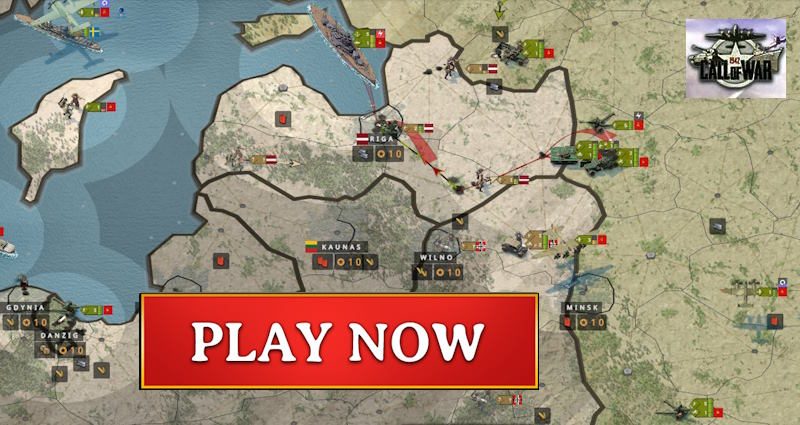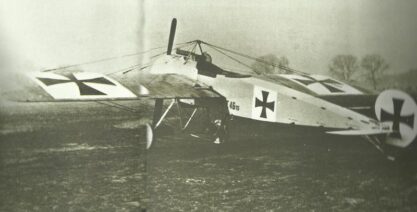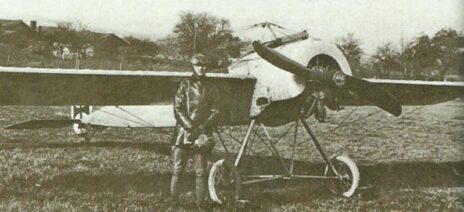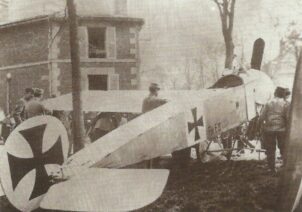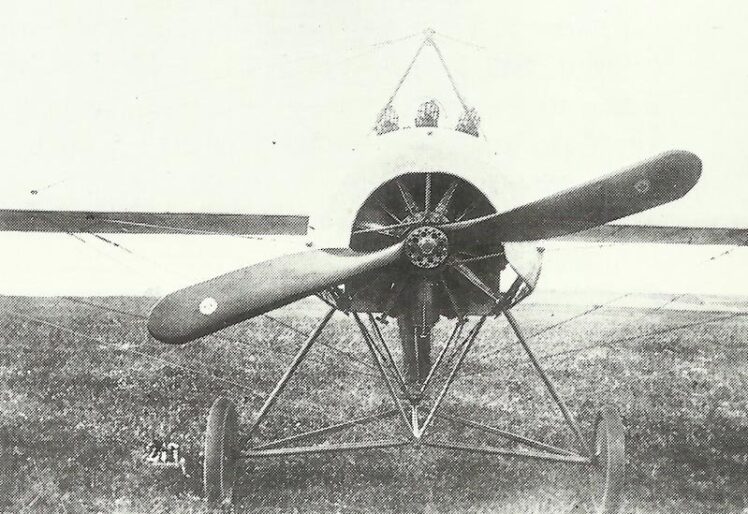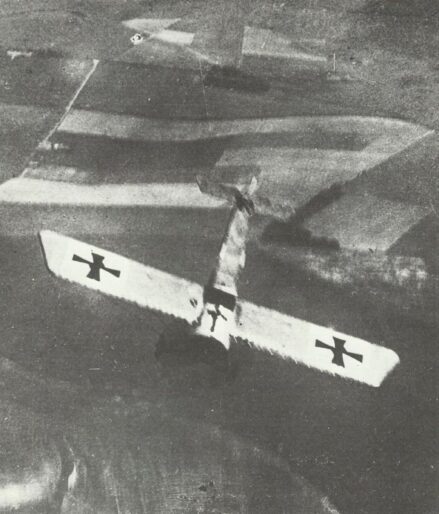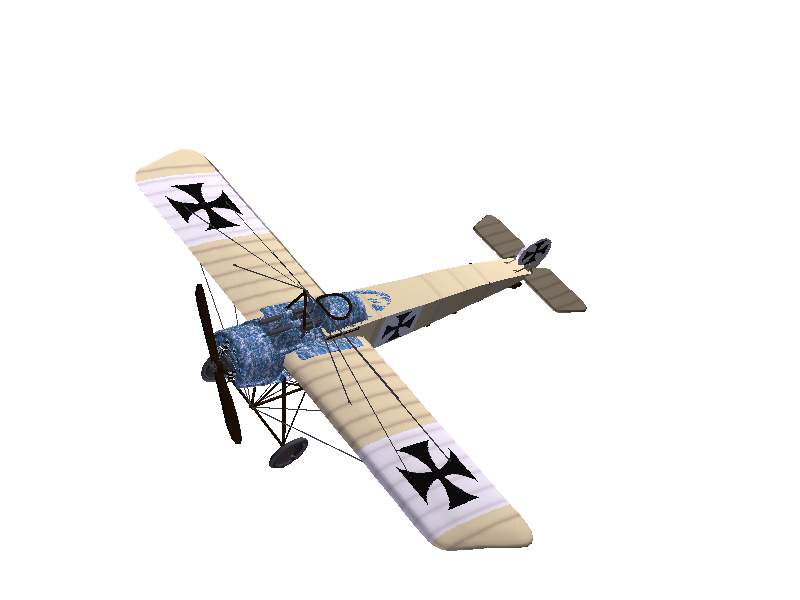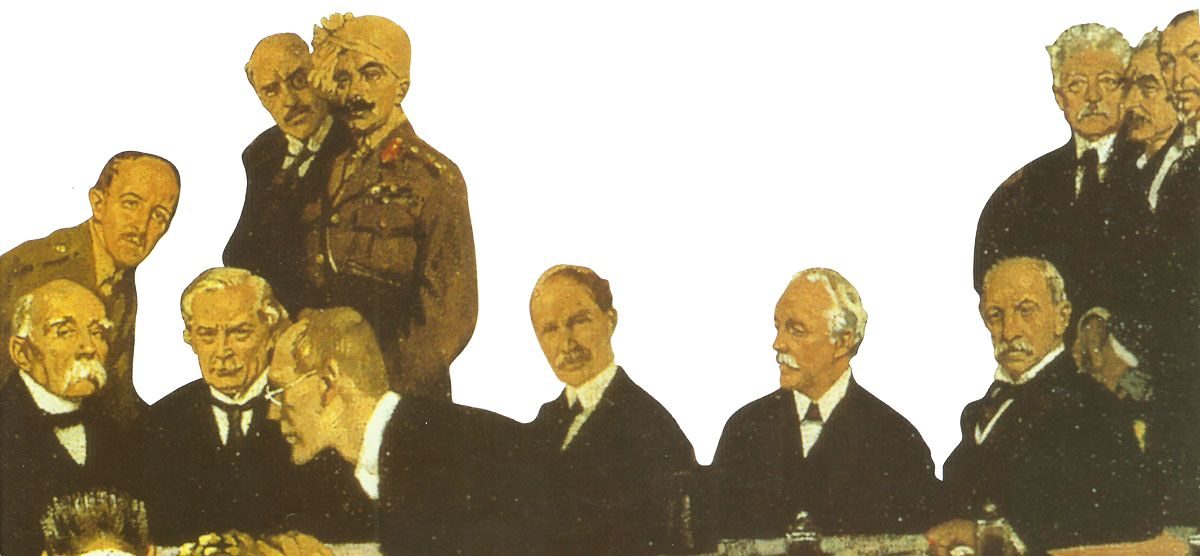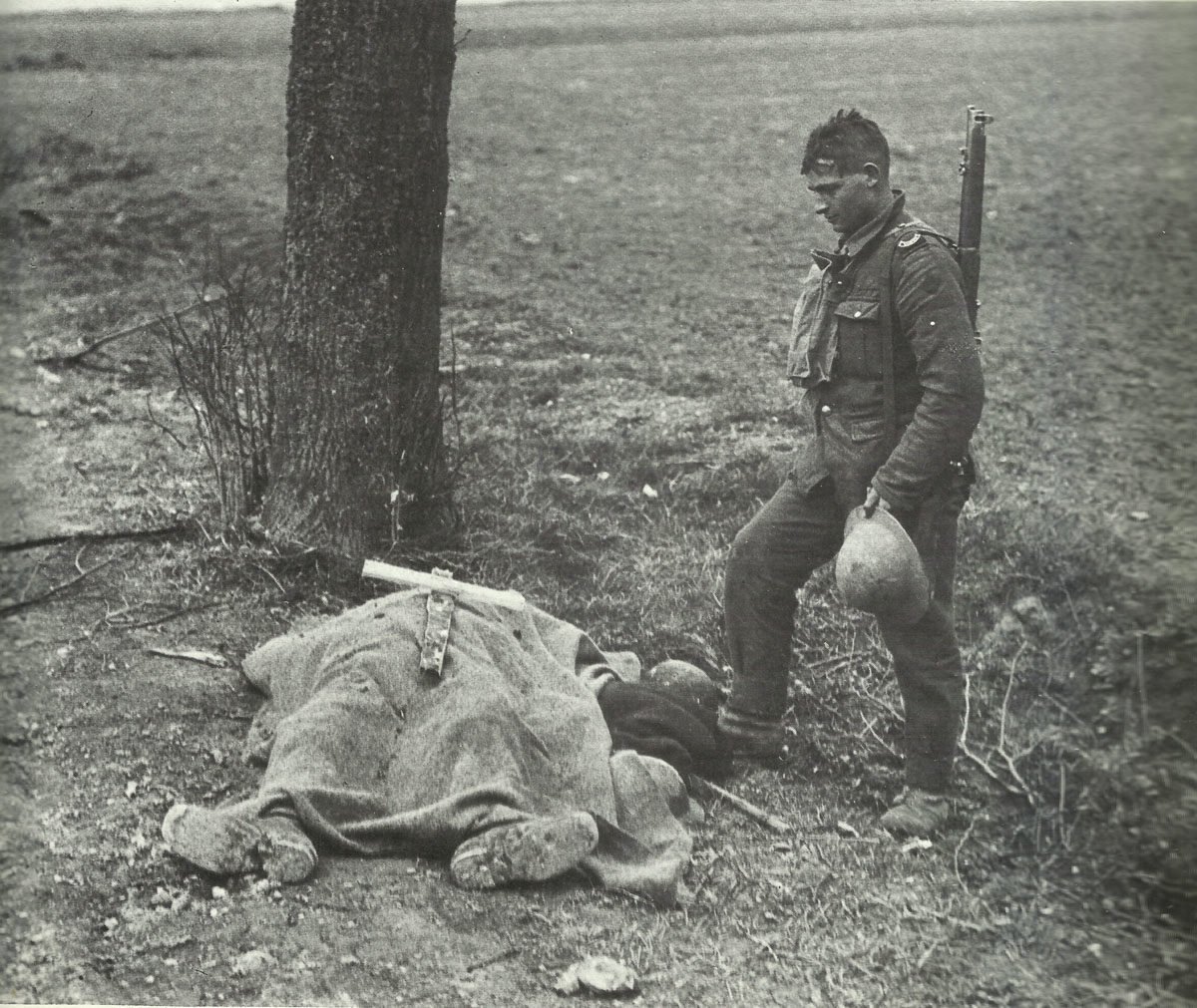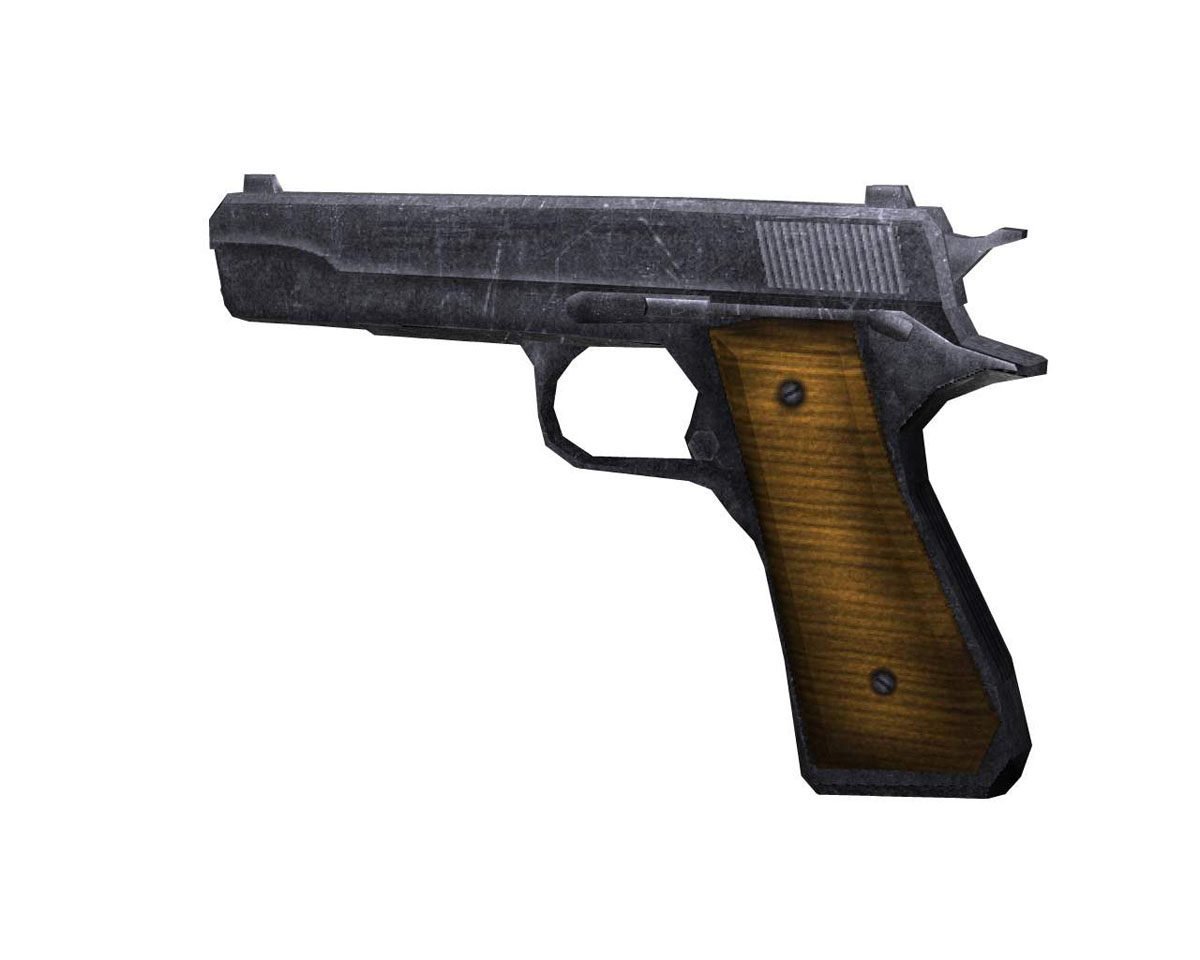German Fokker E monoplane from World War One.
History, development, service, specifications, pictures and 3d model.
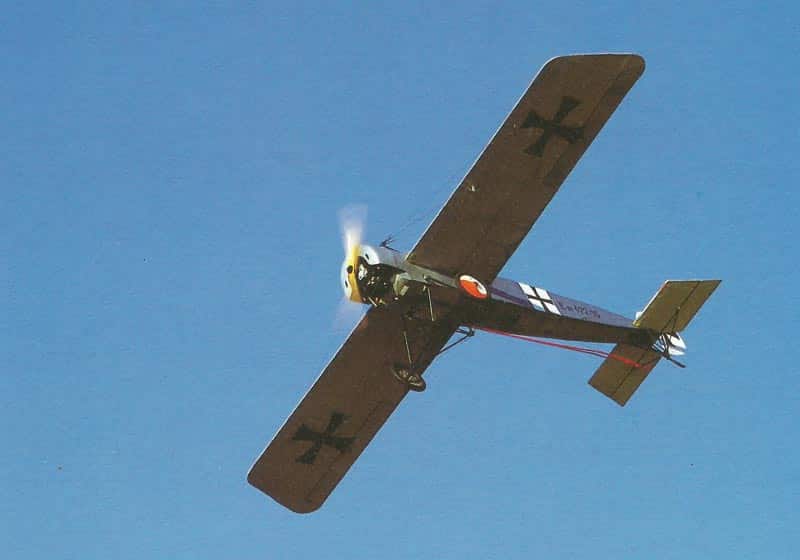
Fokker E.I – E.IV
Table of Contents
Fokker Eindecker
Type: single-seat fighting scout.
The Fokker Eindecker (commonly referred to as “Fokker E”) was a series of German monoplane fighter aircraft used during World War I. It is most famous for being the first aircraft to be fitted with a synchronization gear, allowing its single machine gun to fire through the spinning propeller without hitting the blades. This innovation gave the Germans a significant air superiority advantage during a period known as the “Fokker Scourge” (mid-1915 to early 1916).
Oberview
Models:
– The main variants were the E.I, E.II, E.III (the most produced), and E.IV.
– The Eindecker (“monoplane” in German) was a single-seat, single-engine, shoulder-wing monoplane.
Armament:
– Early versions had a single 7.92 mm Parabellum or Spandau machine gun.
– Later versions (E.IV) sometimes carried two machine guns.
Engine:
– Most used rotary engines, such as the 80 hp Oberursel U.0 or the 100 hp Oberursel U.I.
Historical Impact:
– The synchronization gear, invented by Anthony Fokker and his team, allowed the pilot to aim the entire aircraft, making dogfighting far more effective.
– Allied pilots were shocked by the sudden German air superiority, prompting rapid development of their own synchronized fighters.
Legacy:
– The Fokker Eindecker was soon outclassed by newer Allied biplanes like the Nieuport 11 and Airco DH.2 but remains a milestone in fighter aircraft development.
Famous Aces:
– Max Immelmann and Oswald Boelcke were among the top German aces who flew the Fokker Eindecker.
Summary:
The Fokker Eindecker was the world’s first true fighter plane, thanks to its synchronized machine gun, and it temporarily gave Germany air dominance in WWI. Its design and technology shaped the future of aerial combat.
History:
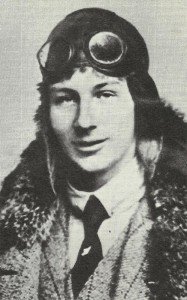
Fokker himself flew a number of demonstrations with operational units in May 1915, and by mid-July 11 service pilots of Feldfliegerabteilung (FlAbt) 62 at Douai were flying the E I, among them Lieutenant Oswald Boelcke. Another pilot soon to be instructed on the E I was Immelmann.
The E I was something of a makeshift aircraft, rushed into production with an 80-hp (60-kW) Oberursel rotary, and was joined in service by the E II which had wings of reduced area in an attempt to increase speed, but this resulted in the aircraft being more difficult to fly and so was less popular.
The main version was the E III, of which the first example reached the Western Front in August with a 100-hp (75-kW) Oberursel U I, and it was at the controls of this version that plots such as Boelcke, Immelmann, von Althaus, Buddecke, Parschau and Wintgens were to create the legend of the monoplane’s invincibility.
Indeed, it was only the fast-growing number of victories being gained by the front-line pilots that reversed an order grounding the Fokker following a number of fatal crashes back in Germany. One further version, the E IV, was produced in small numbers, this being powered by a 160-hp Oberursel two-row rotary, and a special example was prepared for Immelmann equipped with three synchronized guns.
It has been suggested that only when a Fokker E III fell intact into British hands on 8 April 1916 could an antidote be developed to counter the ‘Fokker scourge’. This is not correct as the Fokker’s decline in fact began as early as January that year with the arrival in service of the excellent little Nieuport XI, and with the arrival in service the following month of the RFC’s first D.H.2 unit, No. 24 squadron, under Lanoe Hawker.
Moreover, contrary to general tradition, the Fokker’s gun armament was far from reliable, its ammunition not being wholly suitable for aircraft use, while the gun itself was prone to freezing. Be that as it may, the Eindecker was certainly good enough to hold sway over France fo almost a year.
Pictures Fokker Eindecker
Specifications Fokker Eindecker
Specifications:
Specification | E I. | E II. | E III | E IV |
|---|---|---|---|---|
Type | single-seat fighting scout | |||
Powerplant | 80-PS Oberursel U.O 7-cylinder rotary piston engine | 100-PS Oberursel U I 9-cylinder | 100-PS Oberursel U I | 160-PS Oberursel 14-cylinder |
Span | 8,53 m | 8,00 m | 9,52 m (31ft 2.75in) | |
Length | 6,75 m | 7,1 m | 7,3 m | |
Height | 3,12 m | 2,6 m | 2,79 m (9ft 1.75in) | |
Wing area | ? | ? | 16.00 m² (172.8 sqft) | |
Weight empty | c.500 kg | c.500 kg | 400 kg (882 lb) | ? |
Max weight take-off | 562 kg | 609 kg (1345 lb) | 635 kg | |
Max speed | 132 km/h | 140 km/h (87.5 mph) | 134 km/h | |
Service ceiling | 3100 m | 3650 m | 3500 m | |
Endurance | ? | 1.5 h | 2.75 h | ? |
Armament | 1 x 7.92-mm-Spandau LMG synchronized forward-firing | some with 2 | some with 3 | |
First flight | May 1915 | July 1915 | Sep 1915 | ? |
Production | ? | ? | 300 | (few) |
Animated 3D Model Fokker Eindecker
References and literature
Jane’s Fighting Aircraft of World War I
Aircraft of World War I 1914-1918 (Jack Herris, Bob Pearson)
Technik und Einsatz der Kampfflugzeuge vom 1. Weltkrieg bis heute (Ian Parsons)
Das große Buch der Luftkämpfe (Ian Parsons)
Fighters, Attack and Training Aircraft 1914-1919 (Kenneth Munson)
Kampfflugzeuge (Bill Gunston)
The Illustrated Encyclopedia of Weapons of World War I (Chris Bishop)
An Illustrated History of the Weapons of World War One (Ian Westwell)


